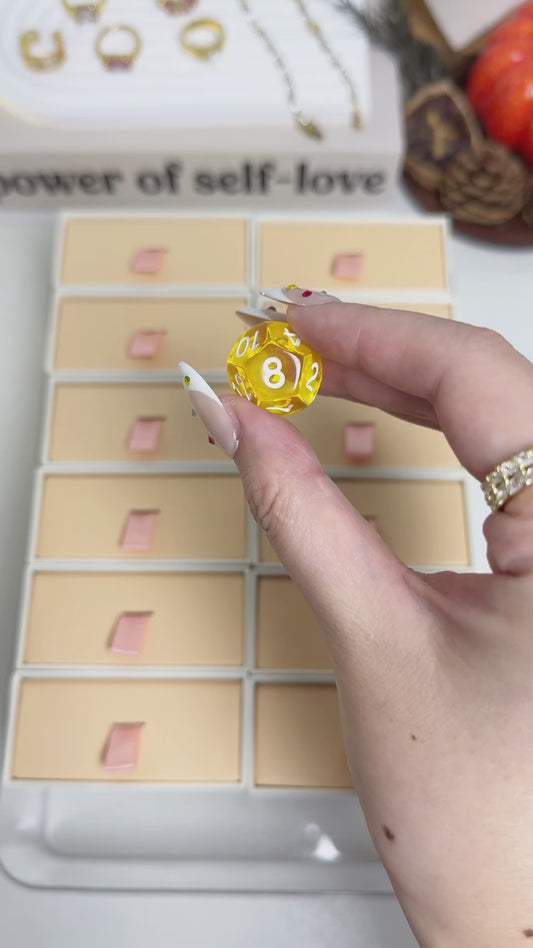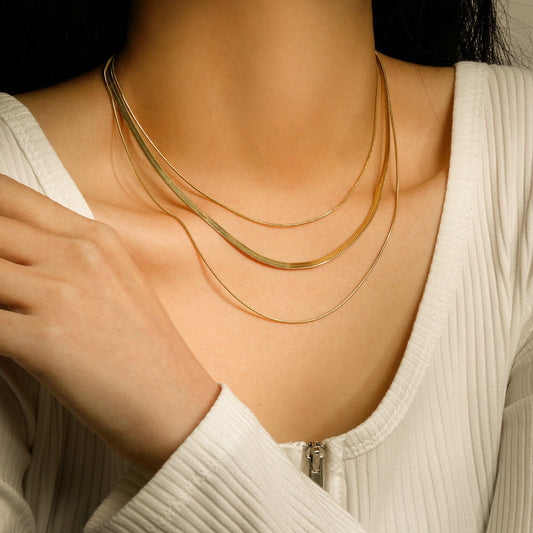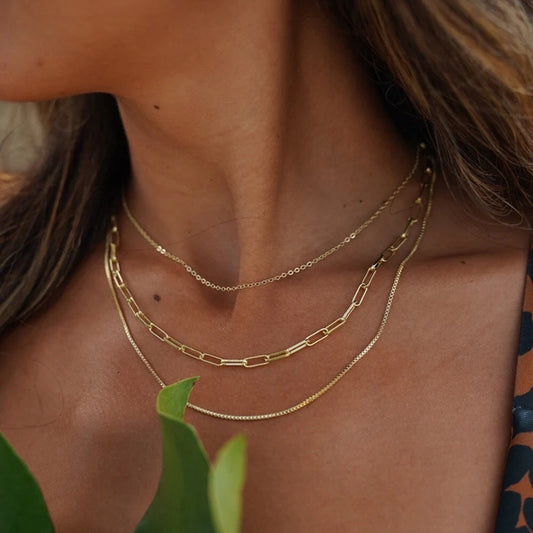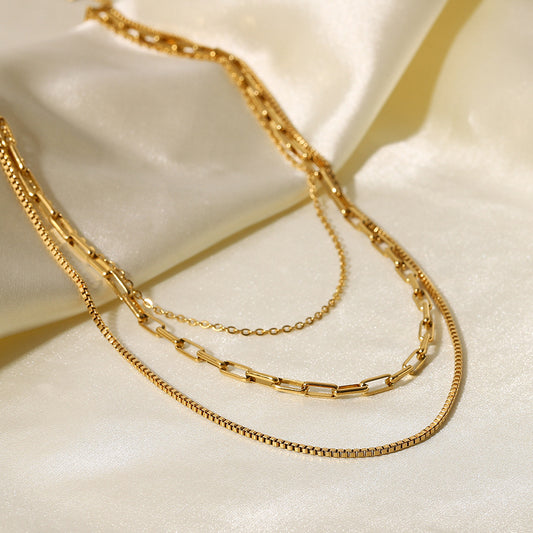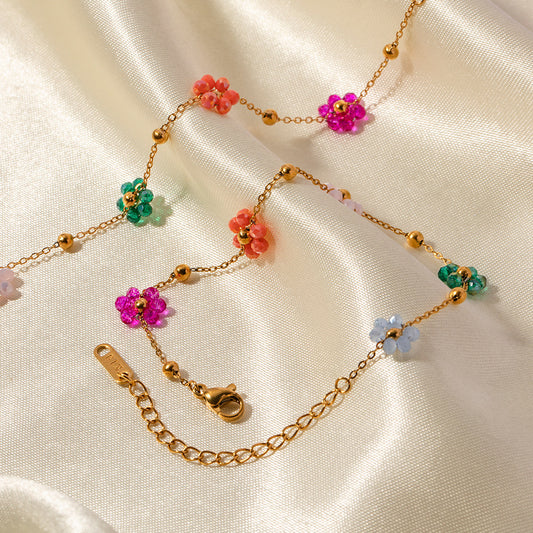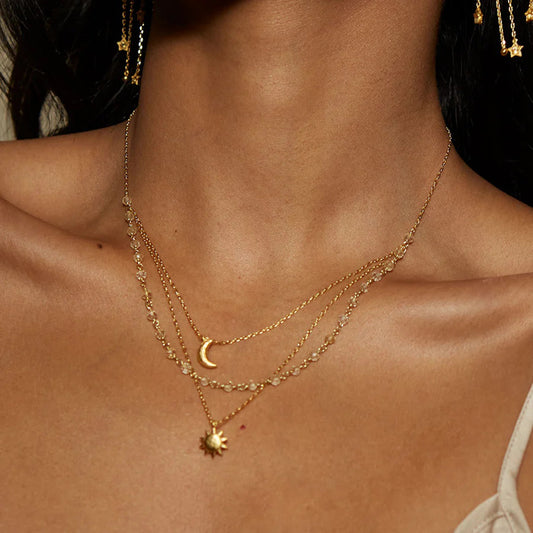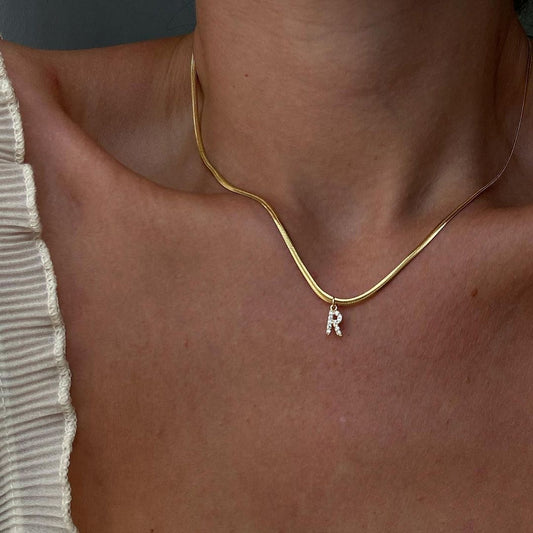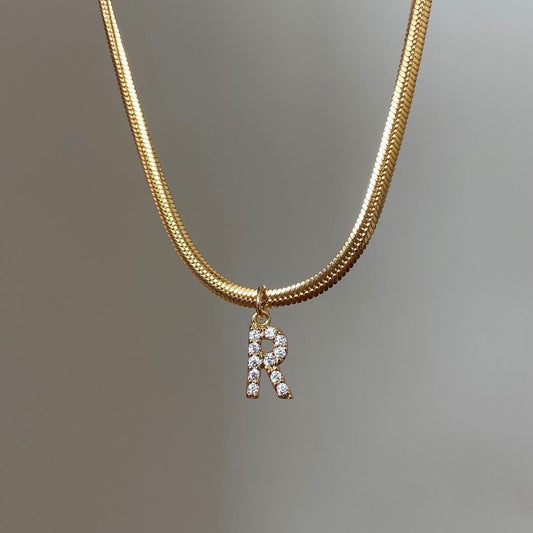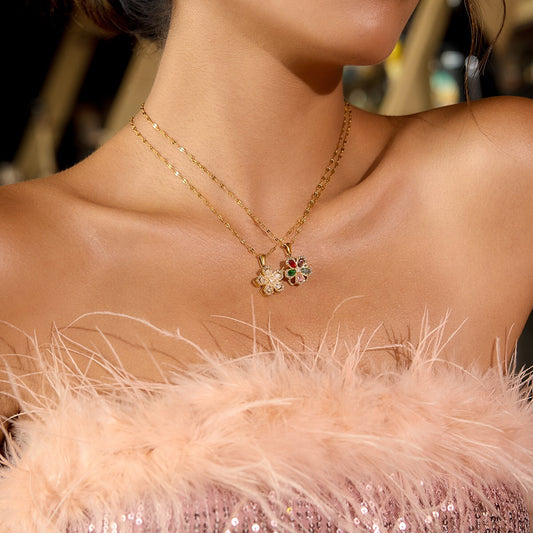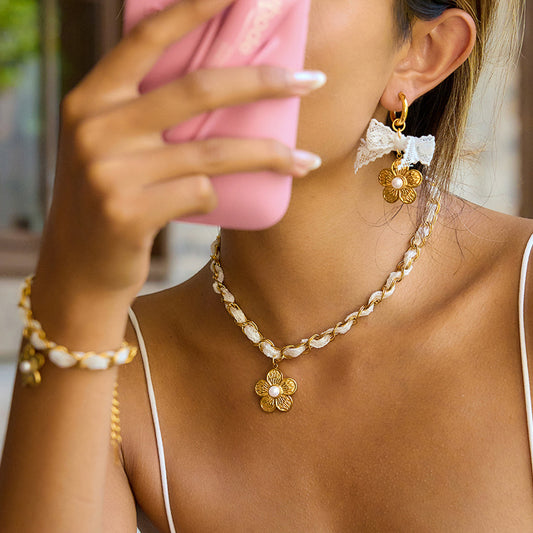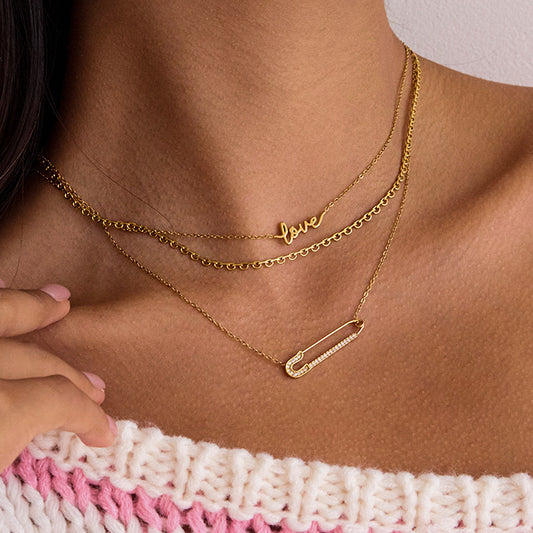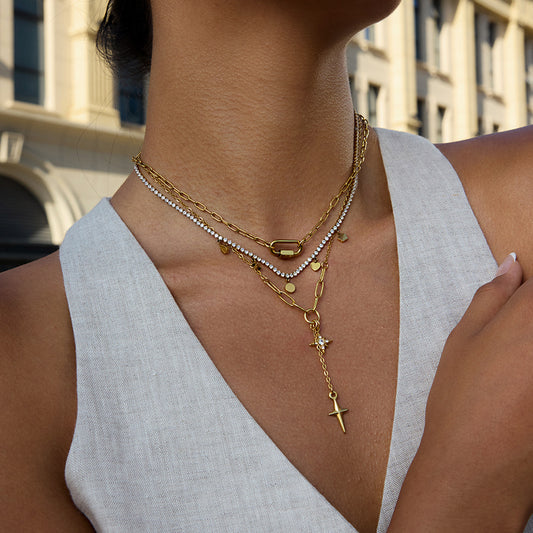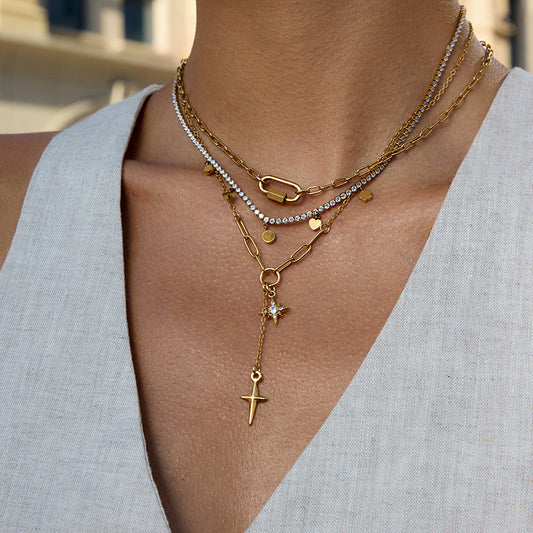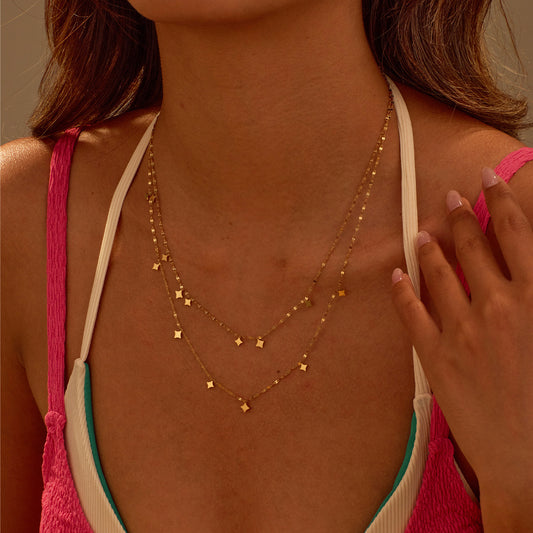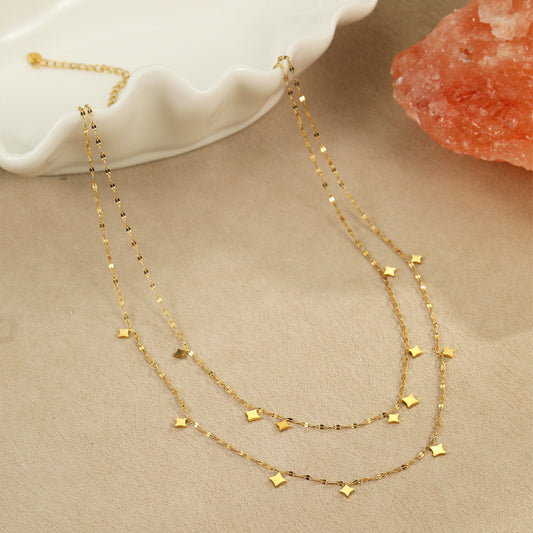“Will sterling silver tarnish?” is one of the most common questions among jewelry lovers, and the answer carries significant weight for anyone investing in this popular metal. According to a recent report by TechSci Research titled “Silver Jewelry Market - Global Industry Size, Share, Trends, Competition Forecast & Opportunities, 2030”, the Global Silver Jewelry Market was valued at USD 40.91 billion in 2024 and is projected to reach USD 53.77 billion by 2030. According to the Jewelry Information Center, sterling silver is the second-most popular precious metal for jewelry (after gold), with 45% of consumers owning at least one sterling silver piece—but 78% of those owners report struggling with tarnish at some point. Tarnish, that dull, discolored film that forms on silver’s surface, is a natural occurrence, but it’s not inevitable with the right care. Whether you’re wearing a sterling silver bridesmaid necklace, a daily hoop earring, or a heirloom bracelet, understanding why tarnish happens and how to prevent it will keep your pieces looking radiant for years. This guide breaks down everything you need to know about sterling silver tarnish—from its causes to easy solutions.
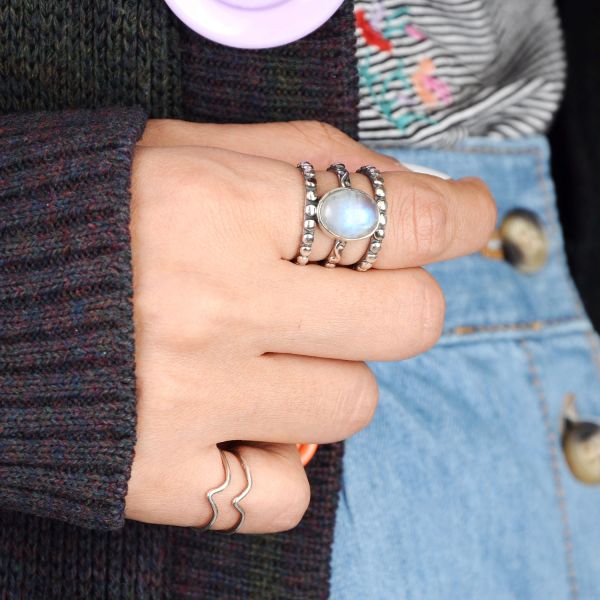
Will Sterling Silver Tarnish? The Straight Answer
Yes—but It’s Preventable
First, let’s clear the air: yes, sterling silver will tarnish over time, but this doesn’t mean it’s a flaw or sign of poor quality. Sterling silver is an alloy made of 92.5% pure silver and 7.5% other metals (usually copper) to add strength—pure silver is too soft for everyday jewelry. The copper content is the key culprit behind tarnish: when it reacts with sulfur-containing compounds in the air, water, or even your skin, it forms a thin layer of silver sulfide, which appears as a dull gray, black, or yellowish film on the metal’s surface. The good news? Tarnish is only skin-deep—it doesn’t damage the underlying silver, and it can be easily removed. With proactive care, you can slow or even stop tarnish from forming, keeping your jewelry shiny and wearable.
Myth Busting: “Tarnish Means It’s Not ‘Real’ Sterling Silver”
A common misconception is that tarnish indicates your jewelry is fake or low-quality. In reality, the opposite is true—genuine sterling silver (marked with a “925” stamp) will tarnish because of its copper content. Fake silver or silver-plated jewelry may not tarnish (if it’s made of nickel or brass) or may peel instead of tarnishing, revealing the base metal underneath. If your “sterling silver” piece never tarnishes, it’s worth checking for a 925 hallmark—without it, it’s likely not authentic. Tarnish is a natural characteristic of real sterling silver, so embrace it as a sign of your piece’s authenticity, then use the right methods to keep it bright.
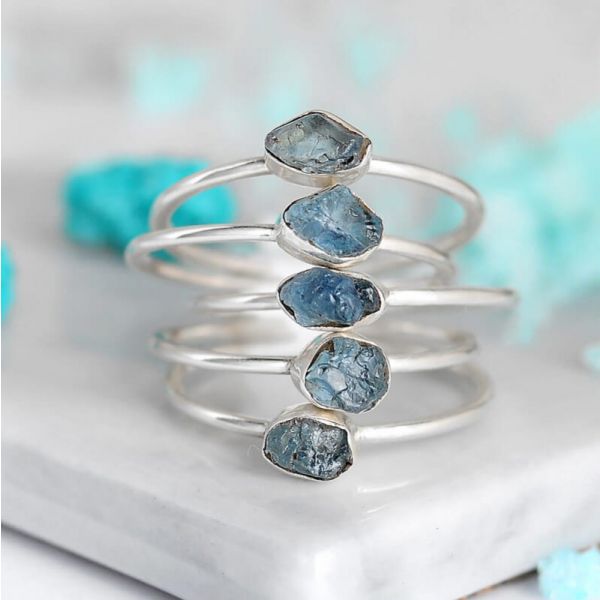
Why Does Sterling Silver Tarnish? Key Causes
Environmental Factors: Air, Humidity, and Chemicals
The biggest trigger for sterling silver tarnish is exposure to sulfur compounds, which are everywhere in our environment. Airborne sulfur dioxide (from pollution, industrial areas, or even natural sources like volcanoes) is the most common culprit—this is why jewelry stored in open air tarnishes faster than pieces kept in sealed containers. Humidity amplifies the process: moisture in the air speeds up the chemical reaction between copper and sulfur, so sterling silver stored in damp places (like a bathroom) will tarnish much quicker. Other environmental chemicals, like chlorine (in swimming pools), saltwater, and household cleaners (bleach, ammonia), also accelerate tarnish and can even damage the silver if left on for too long.

Body Chemistry: Sweat and Oils
Your body’s natural chemistry plays a big role in how quickly your sterling silver tarnishes. Sweat contains sulfur compounds and acids that react with the copper in sterling silver—people who sweat more (or have more acidic sweat) may notice their jewelry tarnishes faster with regular wear. Cosmetics, perfume, hairspray, and lotion also contain chemicals that contribute to tarnish: applying these products while wearing sterling silver traps the chemicals against the metal, speeding up discoloration. Even skin oils can build up on the surface, creating a barrier that attracts sulfur and moisture, leading to tarnish over time.
Storage Habits: How You Keep Your Jewelry Matters
Poor storage is one of the most avoidable causes of sterling silver tarnish. Leaving jewelry out on a dresser or in a jewelry box without a lid exposes it to air, humidity, and dust—all of which contribute to tarnish. Storing sterling silver with other metals (like gold or copper) can also cause chemical reactions that speed up discoloration. Even something as simple as wrapping jewelry in a regular tissue or paper towel can be harmful: these materials contain sulfur compounds that transfer to the silver, causing tarnish. The good news is that small changes to your storage routine can drastically reduce tarnish.
How to Prevent Sterling Silver from Tarnishing
Wear It Regularly (Yes, Really!)
One of the simplest ways to prevent sterling silver from tarnishing is to wear it often. Your skin’s natural oils create a thin, protective barrier on the silver’s surface, slowing down the reaction with sulfur in the air. Pieces that are worn daily (like a sterling silver bracelet or stud earrings) tend to stay shinier than those stored away for months. Just be sure to clean your jewelry after wearing it to remove excess oils and sweat—this balances the protective benefits with preventing buildup that can lead to tarnish over time.
Clean Before and After Wearing
A quick cleaning routine can go a long way in preventing tarnish. Before wearing sterling silver, wipe it with a soft microfiber cloth to remove any dust or residue that may have accumulated while stored. After wearing, wipe it again with the same cloth to remove sweat, oils, and any traces of cosmetics or perfume. For pieces that get extra dirty (like a bracelet worn during a workout), use a mild solution of warm water and dish soap—dip the cloth in the solution, gently wipe the jewelry, then dry thoroughly with a clean cloth. Avoid soaking sterling silver for long periods, as excess water can speed up tarnish.

Store It Properly: Seal Out Air and Humidity
The most effective way to prevent tarnish is to store sterling silver in an airtight, low-humidity environment. Use anti-tarnish jewelry bags (made of non-sulfur-containing materials like polyethylene) or airtight containers with a silica gel packet to absorb moisture. For larger collections, a jewelry box with a tight-fitting lid and anti-tarnish lining works well—look for boxes labeled “tarnish-resistant.” Avoid storing sterling silver in the bathroom, kitchen, or basement (high-humidity areas) and never wrap it in paper towels, tissues, or newspaper (which contain sulfur). If you’re storing multiple pieces, keep them separate to prevent scratching and chemical reactions between metals.
Avoid Harmful Chemicals and Environments
Protect your sterling silver by removing it before coming into contact with chemicals or harsh environments. Take off your jewelry before swimming (chlorine and saltwater are major tarnish triggers), showering (soap and hot water can cause buildup), doing household chores (cleaners like bleach and ammonia damage silver), or applying beauty products (perfume, hairspray, lotion). If your jewelry does come into contact with these substances, clean it immediately with a damp cloth and dry thoroughly to minimize damage. For outdoor activities in polluted or humid areas, consider leaving valuable sterling silver pieces at home to avoid excess exposure.
How to Remove Tarnish from Sterling Silver
DIY Methods: Safe, Affordable, and Effective
If your sterling silver has already tarnished, don’t panic—there are easy DIY methods to restore its shine, using items you probably already have at home. Here are three safe, effective options:
-
Baking Soda and Aluminum Foil: Line a bowl with aluminum foil (shiny side up), add 1 cup of hot water, 1 tablespoon of baking soda, and 1 teaspoon of salt. Stir until dissolved, then place the tarnished jewelry in the bowl—ensure it touches the aluminum foil. Let it soak for 5–10 minutes (longer for heavy tarnish), then remove, rinse with warm water, and dry with a microfiber cloth. The aluminum reacts with the baking soda to lift the tarnish off the silver.
-
Vinegar and Baking Soda: Mix ½ cup of white vinegar with 2 tablespoons of baking soda in a bowl—this will fizz. Submerge the jewelry in the solution for 2–3 hours, then rinse with warm water and dry thoroughly. This method is gentle enough for delicate pieces like sterling silver necklaces with gemstones (just avoid soaking porous gemstones like pearls).
-
Toothpaste: Apply a small amount of non-gel, non-whitening toothpaste to a soft cloth and gently rub the tarnished areas in circular motions. Rinse with warm water and dry with a cloth. This works best for light tarnish and small pieces like earrings or rings.
Commercial Cleaners: When to Use Them
For heavy tarnish or delicate pieces (like those with intricate designs or gemstones), a commercial sterling silver cleaner is a good option. Look for cleaners labeled “non-abrasive” to avoid scratching the silver—avoid products with harsh chemicals like ammonia or bleach. Follow the instructions carefully: most involve dipping the jewelry in the cleaner for a few seconds, rinsing thoroughly, and drying immediately. Commercial silver polish cloths (like those made by Wright’s or Connoisseurs) are also great for on-the-go touch-ups—they contain mild abrasives that remove tarnish without damaging the silver. Keep one in your purse or jewelry box for quick shine boosts.
Avoid These Tarnish-Removal Mistakes
While tarnish is easy to remove, certain methods can damage your sterling silver. Never use abrasive tools like steel wool, scouring pads, or hard-bristled toothbrushes—these scratch the metal, making it more prone to tarnish in the future. Avoid harsh chemicals like bleach, ammonia, or acetone—they can corrode the silver and discolor gemstones. Don’t soak sterling silver with porous gemstones (pearls, opals, turquoise) for long periods, as water can damage the stones. Finally, never use silver cleaners on silver-plated jewelry—they’ll strip the plating, revealing the base metal underneath.

Does Sterling Silver Tarnish Faster Than Other Silvers?
Sterling Silver vs. Pure Silver
Pure silver (99.9% silver, also called fine silver) tarnishes much slower than sterling silver. This is because it contains no copper to react with sulfur compounds. However, pure silver is too soft for everyday jewelry—it bends, scratches, and breaks easily—so it’s rarely used for pieces you wear regularly. Sterling silver’s copper content makes it durable, but it’s the trade-off for faster tarnish. If you want a silver piece that tarnishes less, look for “sterling silver with rhodium plating”—rhodium is a hard, tarnish-resistant metal that coats the sterling silver, preventing copper from reacting with the environment.
Sterling Silver vs. Silver-Plated Jewelry
Silver-plated jewelry (a thin layer of silver over a base metal like nickel or brass) doesn’t tarnish the same way as sterling silver. Instead of forming a removable tarnish layer, the silver plating can wear off over time, revealing the base metal underneath. This “peeling” is often mistaken for tarnish, but it’s irreversible—once the plating is gone, the piece loses its silver appearance. Sterling silver, by contrast, retains its silver composition even when tarnished—removing the tarnish reveals the same shiny metal underneath. For long-term value and wear, sterling silver is a better investment than silver-plated jewelry, even with its tarnish tendency.
Will Sterling Silver Tarnish If Worn Every Day?
Many people wonder if daily wear accelerates or slows sterling silver tarnish—and the answer is a bit of both. As mentioned earlier, daily wear creates a protective barrier from your skin’s oils, slowing down tarnish caused by air exposure. However, daily wear also exposes the silver to sweat, cosmetics, and environmental chemicals, which can speed up tarnish if not cleaned properly. The key is to balance daily wear with regular cleaning. If you wear a sterling silver piece every day (like a wedding band or necklace), wipe it down with a microfiber cloth every night to remove oils and sweat, and give it a deeper clean with warm water and soap once a week. With this routine, your daily-worn sterling silver will stay shiny and tarnish-free.
Will Sterling Silver Tarnish? Final Tips for Long-Lasting Shine
To recap: yes, sterling silver will tarnish, but it’s a natural, reversible process that doesn’t diminish the metal’s value or beauty. The key to keeping your sterling silver pieces radiant is understanding the causes of tarnish (copper reacting with sulfur, humidity, and chemicals) and taking simple preventative steps: wear your jewelry regularly, clean it after each use, store it in airtight containers, and avoid harsh environments. When tarnish does appear, use safe DIY methods or non-abrasive commercial cleaners to restore its shine. Whether you’re wearing a sterling silver bridesmaid bracelet, a daily earring, or a family heirloom, a little care goes a long way in keeping it looking its best. Ready to give your sterling silver jewelry the care it deserves? Explore our collection of anti-tarnish storage solutions and gentle cleaners to keep your pieces shining for years to come.




